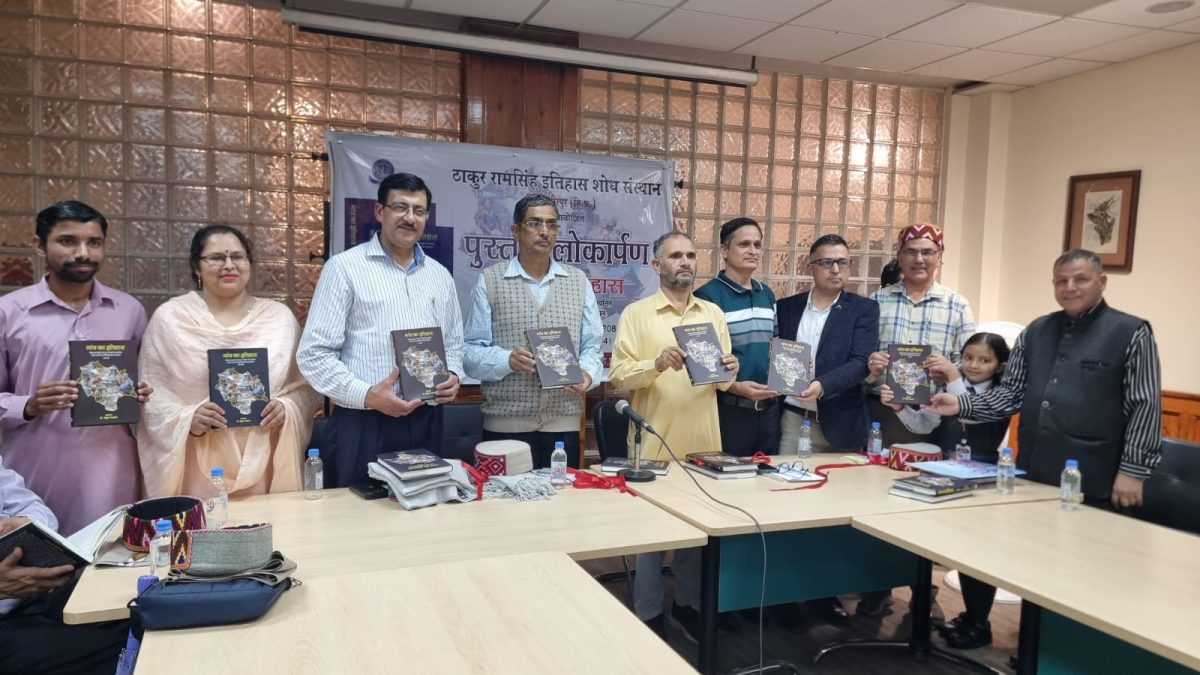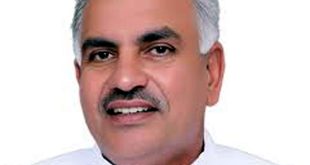
Shimla, June 29 (HS). During the National Book Fair, the book release of Himachal Pradesh Ke Gaon Ka Itihas published in two volumes by Thakur Ram Singh History Research Institute Neri Hamirpur was held in the auditorium of the historic Gaiety Theatre.
On this occasion, the director and guide of the research institute, Dr. Chetram Garg said, “Gaon Ka Itihaas” is an important step towards rewriting Indian history. To understand the history of India, it is very important to understand the history of villages, folk culture, traditions, life and social systems. Most of the history of India has been written by the invaders British and Mughals.
Under the divide and rule strategy, they distorted the real history of India and presented it as per their convenience and showed inferiority complex towards Indian history. This distorted history is being taught in educational institutions across India. Therefore, due to the discrepancies related to historical events, its required amendment and rewriting is necessary.
He said that calling the invaders great and ignoring the contribution of Indian great men and people is a part of this conspiracy. Therefore, to rewrite the history of India, it is necessary to write the history of the village. Only when the true history of the village comes out, the history of India can be written authentically on the basis of true events, so that the coming generation gets an opportunity to know the history, folk culture and traditions of their country properly and they can be proud of it.
Addressing the gathering, social worker Rajkumar Verma, the president of the program, said that in the very few years since its establishment, the research institute Neri has organized seminars, workshops and discussions on various topics of literature and the research papers received through these programs are being continuously published. Even today, conspiracies are being hatched to divide the country in the name of freedom of expression and in connivance with anti-national forces, but the agenda of weakening the country cannot stand in front of the strength of India's nationalist forces.
Former Vice Chancellor of Sardar Patel University Mandi and Chief Guest of the program, Professor DD Sharma said that the history of any country is a matter of pride for its cultural heritage, social system and citizens, but the distortions in it weaken it. Therefore, authentic revision of history and its transfer to the next generation is extremely necessary.
While reviewing the book Gaon Ka Itihaas during the ceremony, Professor Om Prakash Sharma said that the Gaon Ka Itihaas book covers various important topics like history of the selected village, culture, fairs, festivals, public life, social system, customs, folk songs, folk tales, Dev Parampara etc. From this point of view, information about history and folk culture in a single article is the specialty of the book.
Sharing the information, Professor Ankush Bhardwaj, working in the History Department of Himachal Pradesh University, said that these two books published under the title Gaon Ka Itihaas have been edited by Professor Ankush Bhardwaj, working in the History Department of Himachal Pradesh University. Each volume contains an authentic description of the history of six villages, folk culture, life, fairs, festivals, etc., on various topics.
Village History: Both volumes of the book contain the history of 12 villages such as Sahli (Chamba), Gundhla (Lahaul), Ribba (Kinnaur), Charkhari (Mandi), Panjagai (Bilaspur), Dohgi (Una), Jhakando (Sirmaur), Jaunaji (Solan), Batewadi (Shimla), Nerti (Kangda), Naggar (Kullu), etc. These research articles have been written by learned authors Dr. Om Prakash Sharma, Dr. Vivek Sharma, Dr. Roshni Devi, Rajendra Sharma, Dr. Surat Thakur, Mahendra Singh, Mehar Chand, Damodar, Baru Ram Thakur, Dr. Om Dutt Saroch, Rajeshwar Karyappa.
The book launch ceremony was organised during the 8th National Book Fair organised by Ocard India and Himalaya Manch at Ridge Shimla in the Sahitya Utsav. The authors, editors, intellectuals, litterateurs, journalists, intellectuals and readers were actively involved in it.
 look news india
look news india
